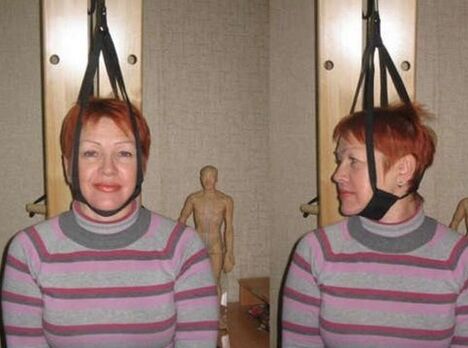Osteochondrosis of the cervical region is a dangerous disease and if left untreated, you can become a disabled person. Faced with this disease, many people think about how to deal with it. Let's understand the intricacies of the disease.
Osteochondrosis of the cervical spine is a disease that has its own symptoms, stages, causes and treatment.
Osteochondrosis of the cervical vertebra is a progressive disease characterized by degenerative, as well as dystrophic changes in the discs between the vertebrae.
The cervical part is represented by the seven vertebrae and is most mobile, but the muscle corset is poorly developed. It is responsible for the slopes of the head on the side and its turns.
The development of the disease is carried out in four stages and the degree differs:
The picture illustrates the stages of development of osteochondrosis of the spinal canal of the cervix
Important! At each stage, different symptoms and different treatments are used. Doctors take measures regardless of the stage of the disease as this allows you to improve the quality of life of the patient.
To date, there is a strong growth of patients from 18 to 30 years of age. Previously, this disease was found only in the elderly and occasionally in people under 40. The causes of cervical osteochondrosis are different.
Among the main ones stand out:
If ordinary back pain occurs, then this can signal to the spine. One of the diseases may be the instability of the cervical vertebrae. What are the causes of the disease and the main symptoms? What complications can be if you do not start treatment in a timely manner?
Osteochondrosis of the cervical vertebra is closely linked to muscle spasms that limit the mobility of the vertebrae. As a result, the blood circulation process is disturbed. All these factors start a dystrophic process in the discs located between the vertebrae. As a result, the nerve is pressed.
The wrong position during sleep can lead to the development of osteochondrosis of the spinal canal of the cervix
Most often, the signs of cervical osteochondrosis are related to the failure of the blood circulation of the brain.
They are typical:
Important! When several symptoms occur, consult a doctor for advice. Do not self -assess.
The intervertebral osteochondrosis of the cervical region manifests itself with the following symptoms:
With cervical osteochondrosis of the spinal canal, the pain is transmitted to the shoulder
Important! If an inflammation of the osteochondrosis of the cervical region occurs, then the symptoms are expressed in a worse form.
Osteochondrosis of the cervical spine is treated, but it takes a long time. In addition, it must be held in the hospital and overall.
Doctors use a whole range of measures and means in the fight against the disease. Among them:
Exercises for osteochondrosis of the cervical spine. Simplicity and efficiency. A systematic approach is required daily
Important! All procedures are prescribed by a doctor depending on the degree of illness and the individual characteristics of the patient. They are always selected individually.
The cervical spine in the human body is an important part and the problems in its work are provoked by negative effects. In addition, a neglected neck -related disease can gradually affect the thoracic area. Exercises for the spine of the cervix will help maintain health and resume mobility in this area of the bone system.
In addition, the procedures are complemented by:
Important! Conservative methods are most commonly used, but unfortunately surgery can be prescribed in difficult situations.
Dry explosion - an effective method in the treatment of cervical osteochondrosis of the spine
The disease can have serious consequences such as:
Important! Any vascular disorders are the most dangerous consequences, since the supply of the brain with blood is disturbed, which can lead to serious illnesses.
Osteochondrosis of the cervical spine requires treatment. It takes a long time, so you should be patient and strictly follow the recommendations and advice of a doctor.
























